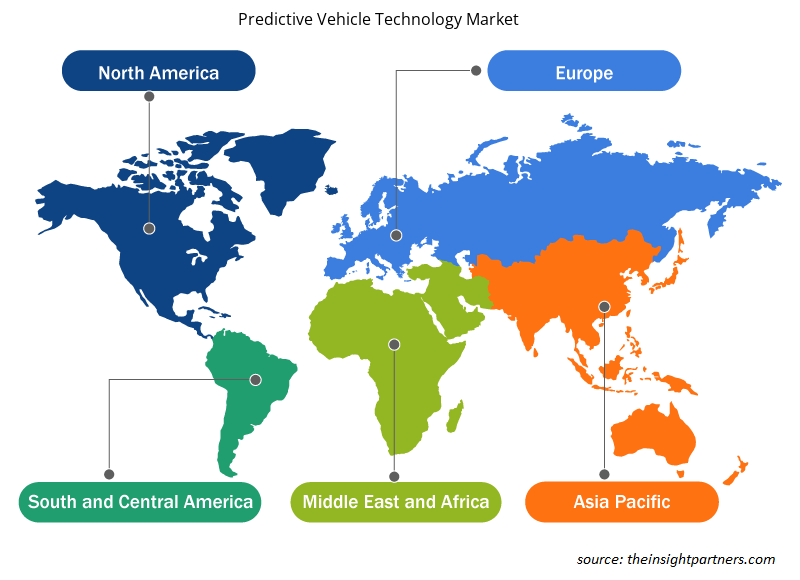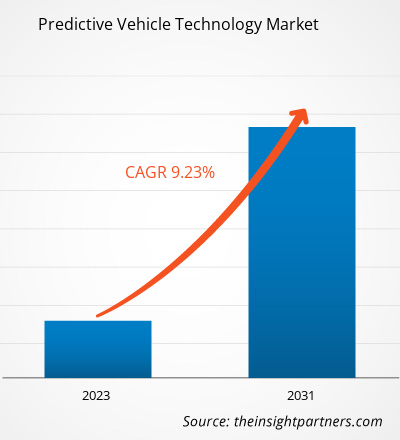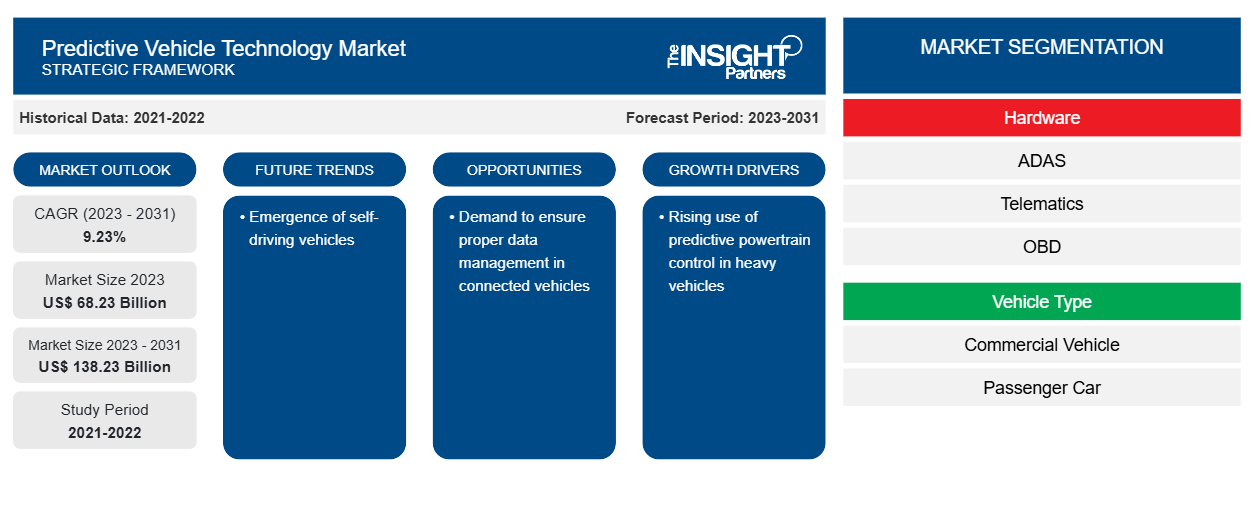预测车辆技术市场规模预计将从 2023 年的 682.3 亿美元增至 2031 年的 1382.3 亿美元。预计 2023-2031 年市场复合年增长率将达到 9.23%。PPC 的优势使得汽车制造商,尤其是重型商用车制造商将 PPC 集成到其车辆中。几乎所有类型的卡车和重型车辆都可以改装 PPC。
预测性汽车技术市场分析
全球预测汽车技术市场生态系统的主要利益相关者包括技术提供商、零部件提供商、原始设备制造商 (OEM) 和汽车行业的最终用户部分。技术提供商向汽车制造商提供 AI、ML 和预测技术,以将这些技术集成到ADAS、OBD、远程信息处理、V2X 等系统中。上述系统的零部件制造商包括传感器、摄像头、显示器等。之后,将集成技术的系统产品安装到车辆中,通过确保驾驶员和乘客的安全为用户提供无忧体验。由 OEM 组成的分销渠道向最终用户类别提供成品。乘用车和商用车都在车辆中使用预测技术和集成成品。预测汽车技术应用于所有类型的车辆,包括轿车、厢式货车、SUV 和卡车。
预测性汽车技术市场概况
目前,汽车行业正在大量整合各种先进技术,以提高乘客的安全性和效率。汽车制造商正在利用人工智能 (AI) 和机器学习 (ML) 来了解驾驶员的模式和趋势,并提高车辆的安全性。这两种技术都已准备好成为未来车辆和汽车行业的重要组成部分。在联网汽车和自动驾驶汽车的竞争中,预测性汽车技术正在所有类型的汽车中获得认可,这为驾驶员和乘客提供了显着的便利。因此,汽车制造商正专注于在支持语音命令的车辆中采用联网设备和物联网。物联网与联网汽车的集成是汽车行业持续发展的下一个重大数字发展。这一事实将通过引入自动驾驶汽车带来另一场革命。自动驾驶汽车/自动驾驶汽车包括一个传感器管理系统,使物联网车对车通信成为可能并成为现实。预计上述联网汽车因素将通过引入预测防撞系统、预测维护系统等来促进预测技术的使用。
定制此报告以满足您的需求
您可以免费定制任何报告,包括本报告的部分内容、国家级分析、Excel 数据包,以及为初创企业和大学提供优惠和折扣
-
获取此报告的关键市场趋势。这个免费样品将包括数据分析,从市场趋势到估计和预测。
预测汽车技术市场驱动因素和机遇
重型车辆中预测动力系统控制的使用日益增多
预测动力总成控制 (PPC) 几年前问世,并在当前时代获得了发展势头。采用 PPC 有助于在长途交通中降低高达 5% 的油耗。这是一种独特的巡航控制系统,通过智能预测节省资金资源。PPC 使用 3D 地图和 GPS 数据扫描前方道路。之后,系统会自动调整行驶速度。PPC 改装的改进非常适合 FleetBoard 远程信息处理服务,因为这些服务已经在卡车中使用。重型卡车制造商正在与互补业务部门接洽,以改进其产品组合并获得有关 PPC 趋势的更多专业知识。例如,梅赛德斯-奔驰 PPC 技术可供欧洲各地的梅赛德斯-奔驰合作伙伴在 Actros、Arcos 和 Antos 中进行改装。梅赛德斯-奔驰的 PPC 平均订购了 64% 的长途旅行重型车辆。对重型商用车的需求不断增长,预计将增加重型车辆对预测技术的采用。
在联网汽车领域,最普遍的机遇是数据管理。联网汽车将大量数据传输到云端,因此,为了利用大量数据,对预测分析和数据分析的需求正在增长。预测性防撞、预测性维护、汽车营销、汽车营销和联网汽车的数据管理是推动市场增长的一些新兴概念。另一个特点是推动预测技术在车辆中的使用。日产借助大数据、先进的传感器和车对车连接开发了一种预测性防撞系统。该系统使我们能够判断前方车辆和前两辆车的距离和速度。此外,如果出现任何异常行为,还会向驾驶员发送视频和声音信号。因此,凭借预测性防撞系统的巨大优势,汽车行业可能会看到一种基于预测驾驶员行为的复杂而有效的防撞系统,因为开发人员正在努力创建应用程序以改善联网汽车之间的通信。
预测车辆技术市场报告细分分析
有助于得出预测汽车技术市场分析的关键部分是硬件、车辆类型和应用。
- 根据硬件,市场分为 ADAS、远程信息处理、OBD。高尔夫球车细分市场在 2023 年占据了更大的市场份额。
- 根据车辆类型,预测车辆技术市场分为商用车、乘用车。乘用车市场在 2023 年占据了最大的市场份额。
- 根据应用,预测车辆技术市场细分为主动警报、安全和安保。2023 年,安全和安保领域占据了最大的市场份额。
预测性汽车技术市场地域分析
预测车辆技术市场报告的地理范围主要分为五个地区:北美、欧洲、亚太、中东和非洲、南美。
美国、加拿大和墨西哥是北美的主要经济体。由于技术进步较快,北美地区仍然是一个竞争激烈的市场,因为不断增长的人口因高消费能力而吸引了多项技术发展。多年来,汽车变得更像轮子上的计算机,这意味着现代车间技术人员只能使用专业的预测分析工具来完成他们的工作。预测性维护使汽车制造商能够在任何汽车零件发生故障之前对其进行修复。使用预测性维护使制造商能够改变制造过程并消除未来产品的问题。由于该地区在技术方面非常先进,各家公司都在其乘用车和商用车中集成预测性维护工具。
预测车辆技术市场区域洞察
Insight Partners 的分析师已详细解释了预测期内影响预测车辆技术市场的区域趋势和因素。本节还讨论了北美、欧洲、亚太地区、中东和非洲以及南美和中美洲的预测车辆技术市场细分和地理位置。

- 获取预测车辆技术市场的区域特定数据
预测车辆技术市场报告范围
| 报告属性 | 细节 |
|---|---|
| 2023 年的市场规模 | 682.3亿美元 |
| 2031 年市场规模 | 1382.3亿美元 |
| 全球复合年增长率(2023 - 2031) | 9.23% |
| 史料 | 2021-2022 |
| 预测期 | 2023-2031 |
| 涵盖的领域 |
通过硬件
|
| 覆盖地区和国家 |
北美
|
| 市场领导者和主要公司简介 |
|
预测车辆技术市场参与者密度:了解其对业务动态的影响
预测性汽车技术市场正在快速增长,这得益于终端用户需求的不断增长,这些需求源于消费者偏好的不断变化、技术进步以及对产品优势的认识不断提高等因素。随着需求的增加,企业正在扩大其产品范围,进行创新以满足消费者的需求,并利用新兴趋势,从而进一步推动市场增长。
市场参与者密度是指在特定市场或行业内运营的企业或公司的分布情况。它表明在给定市场空间中,相对于其规模或总市场价值,有多少竞争对手(市场参与者)存在。
预测车辆技术市场的主要公司有:
- 爱信精机株式会社
- 有限公司
- 安波福
- Traffilog 有限公司
- 大陆汽车集团
免责声明:上面列出的公司没有按照任何特定顺序排列。

- 了解预测车辆技术市场顶级关键参与者概况
预测汽车技术市场新闻和最新发展
预测性汽车技术市场通过收集一手和二手研究后的定性和定量数据进行评估,其中包括重要的公司出版物、协会数据和数据库。以下是预测性汽车技术市场的发展和战略列表:
- 2023 年 11 月,新奥尔良市宣布将使用 Connected Operations™ Cloud 的先驱 Samsara Inc. 的技术来提高 41 个部门的城市车队运营的安全性、效率和可持续性,包括新奥尔良警察局 (NOPD)、新奥尔良消防局 (NOFD)、公共工程部 (DPW)、法规执行部、公园和公园道路部 (PPW)、卫生部等。该市将在其车队上投资 7500 万美元,并将与 Samsara 的技术合作视为维护和保护其车辆的关键。(来源:Samara Inc,新闻稿/公司网站/时事通讯)
- 2023 年 9 月,领先的基础设施服务提供商 M Group Services 的车队管理运营业务 M Group Services Plant & Fleet Solutions (MGSPFS) 一直与 Connected Operations™ Cloud 的先驱 Samsara 和英国车队安全解决方案提供商 Motormax 合作,提供下一代车载安全系统,以保护驾驶员、道路使用者和公民。(来源:M Group Services Plant & Fleet Solutions,新闻稿/公司网站/通讯)
覆盖范围和交付成果
“预测汽车技术市场规模和预测(2021-2031)”报告对以下领域进行了详细的市场分析:
- 范围内所有主要细分市场的全球、区域和国家层面的市场规模和预测
- 市场动态,如驱动因素、限制因素和关键机遇
- 未来的主要趋势
- 详细的波特五力分析
- 全球和区域市场分析涵盖关键市场趋势、主要参与者、法规和最新市场发展
- 行业格局和竞争分析,涵盖市场集中度、热点图分析、知名参与者和最新发展
- 带有 SWOT 分析的详细公司简介
- 历史分析(2 年)、基准年、预测(7 年)及复合年增长率
- PEST和SWOT分析
- 市场规模、价值/数量 - 全球、区域、国家
- 行业和竞争格局
- Excel 数据集
近期报告
相关报告
客户评价
购买理由
- 明智的决策
- 了解市场动态
- 竞争分析
- 客户洞察
- 市场预测
- 风险规避
- 战略规划
- 投资论证
- 识别新兴市场
- 优化营销策略
- 提升运营效率
- 顺应监管趋势























 获取免费样品 - 预测车辆技术市场
获取免费样品 - 预测车辆技术市场